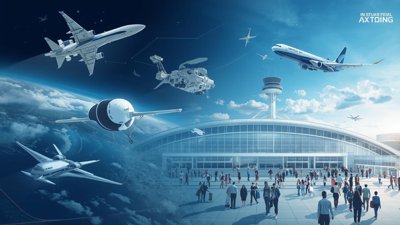
Post by : Amit
The International Safety Management Code Under Pressure
Once hailed as a revolutionary milestone in maritime safety, the International Safety Management (ISM) Code is now under serious scrutiny. As it marks more than 25 years of implementation, seafarers, safety officers, and regulatory experts are asking a hard question: Is the ISM Code still doing its job in 2025?
The answer, increasingly, is “not really.” Despite its initial intent to ensure safer operations at sea and prevent marine pollution, the ISM Code today feels out of touch with modern realities—particularly for the very people it’s supposed to protect: the seafarers themselves.
There’s growing frustration that the code has become more about paperwork than protection, and that it reflects a shore-side view of compliance rather than an onboard culture of real-world safety.
Why the ISM Code Is No Longer Enough
Created by the International Maritime Organization (IMO) in 1993 and made mandatory in 1998, the ISM Code was envisioned as a structured, ship-specific safety management system. It introduced core principles such as risk assessment, continuous improvement, and the “safety culture” concept to maritime operations.
But much has changed in the decades since. Ships are now far more automated, crews are smaller, mental health challenges are on the rise, and commercial pressures have intensified. Meanwhile, the code’s language has hardly evolved, leading to ambiguity in interpretation, excessive paperwork, and uneven enforcement.
According to those in the industry, the biggest problem is this: The ISM Code says the right things, but doesn’t always result in the right actions.
A Culture of Compliance, Not Safety
Many maritime professionals say the ISM Code is now used more as a shield against liability than as a tool to foster genuine safety culture.
"Too often, the focus is on filling forms, passing audits, and ticking boxes rather than identifying and mitigating real risks,” says a chief engineer from a major container line. “If something goes wrong, the first question is, ‘Was the form filled out?’—not ‘Did the crew understand what was dangerous?’”
This mismatch between intent and reality is especially dangerous in an era where crews are younger, more diverse, and often under greater stress than ever before.
A Mental Health Crisis at Sea
Among the most pressing gaps in the ISM Code is its failure to adequately address crew wellbeing and mental health. The code talks about the "human element," but offers no enforceable standards or guidance on managing fatigue, loneliness, depression, or trauma.
A recent survey of global seafarers found that nearly 40% had experienced mental health challenges in the past year, yet less than 10% had access to professional psychological support while onboard.
Experts argue this isn’t just a moral failure—it’s a safety risk. Stressed, overworked, and unsupported crews are far more prone to mistakes, accidents, and slow emergency responses.
Misused and Misunderstood
Another key criticism is that the ISM Code is often misused by companies to shield themselves from blame. In the wake of a maritime accident, it’s not uncommon for shipping companies to point to ISM compliance—on paper—as a defense, even when conditions onboard were far from safe.
“There’s a gap between policy and practice,” says a maritime attorney involved in several international shipping accident investigations. “Just because a company has an ISM-compliant manual doesn’t mean the crew was actually trained, rested, or given the resources to implement it.”
This legal misuse erodes accountability and trust, leaving seafarers to bear the consequences of systemic failures beyond their control.
The Human Voice: Seafarers Call for Change
What’s perhaps most striking in today’s debate is how seafarers themselves are raising their voices. Once hesitant to challenge authority, younger crew members are now turning to forums, unions, and NGOs to demand a modernized safety framework that reflects their lived experiences.
They want an ISM Code that:
This push is not just about comfort—it's about survival in one of the world’s most dangerous professions.
Regulatory Momentum Builds
The good news is that change may finally be on the horizon. In early 2025, the IMO’s Sub-Committee on Human Element, Training and Watchkeeping (HTW) began preliminary discussions on reviewing the ISM Code, especially its relevance to mental health, fatigue, and crew welfare.
The Nautical Institute, InterManager, and ITF Seafarers' Trust have all submitted position papers calling for bold revisions. Some of the ideas being floated include:
For the first time in over two decades, there appears to be political and industrial will to bring the code into the 21st century.
Industry Divided: Risk or Reward?
Not everyone is on board with sweeping reforms. Some shipowners and managers argue that adding more ISM requirements could lead to audit overload, operational delays, and cost escalation.
They also warn that vague concepts like “mental wellbeing” are difficult to enforce objectively, opening the door to legal uncertainty and non-compliance risk.
But safety advocates counter that true safety always costs less than a disaster. The cost of not updating the ISM Code may be measured in lives lost, reputations damaged, and millions in legal claims.
The goal, they say, is not to punish companies, but to elevate safety from a checkbox to a shared commitment—with seafarers at the center, not the sidelines.
From Philosophy to Practice
At its heart, the ISM Code was built around the idea of a “safety culture.” But culture doesn’t grow from manuals—it grows from values, leadership, and feedback loops that empower people at every level of the organization.
To do that, the new ISM Code must include mechanisms for:
Above all, it must acknowledge that safety is no longer just about procedures—it’s about people.
A Turning Point for the Maritime World
The maritime industry is approaching a crossroads. In an age of autonomous systems, decarbonization, and workforce transformation, it’s no longer enough to rely on outdated frameworks.
Updating the ISM Code is not just an administrative task—it’s a moral and operational imperative.
For shipowners, regulators, and crews alike, this is a chance to prove that safety at sea is more than just words in a manual. It’s something you live, breathe, and believe in. Something you do not because you're told to, but because you choose to.
In 2025, the ISM Code needs more than a revision—it needs a rebirth.
ISM Code 2025, Maritime safety standards, Seafarer mental health










Advances in Aerospace Technology and Commercial Aviation Recovery
Insights into breakthrough aerospace technologies and commercial aviation’s recovery amid 2025 chall

Defense Modernization and Strategic Spending Trends
Explore key trends in global defense modernization and strategic military spending shaping 2025 secu

Tens of Thousands Protest in Serbia on Anniversary of Deadly Roof Collapse
Tens of thousands in Novi Sad mark a year since a deadly station roof collapse that killed 16, prote

Canada PM Carney Apologizes to Trump Over Controversial Reagan Anti-Tariff Ad
Canadian PM Mark Carney apologized to President Trump over an Ontario anti-tariff ad quoting Reagan,

The ad that stirred a hornets nest, and made Canadian PM Carney say sorry to Trump
Canadian PM Mark Carney apologizes to US President Trump after a tariff-related ad causes diplomatic

Bengaluru-Mumbai Superfast Train Approved After 30-Year Wait
Railways approves new superfast train connecting Bengaluru and Mumbai, ending a 30-year demand, easi